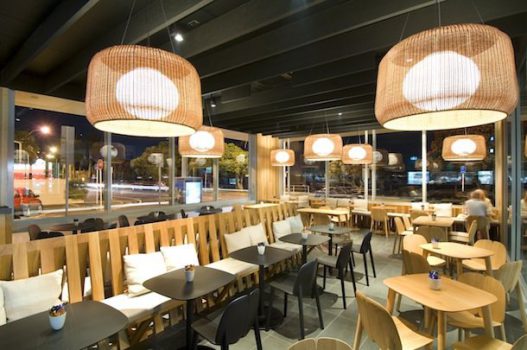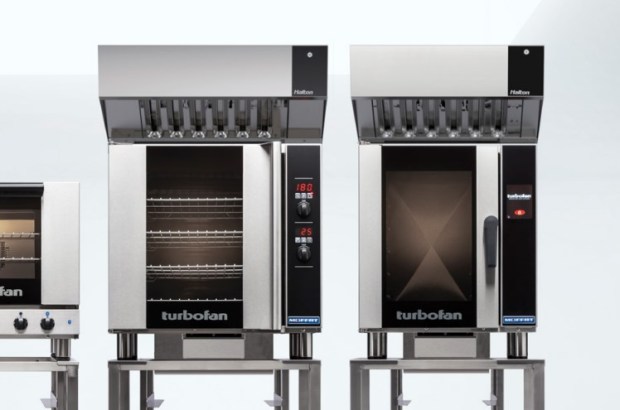
St Helier’s Bay Café & Bistro in Auckland improved the level of acoustical comfort for customers by discreetly installing baffle beams to the ceiling, wrapped in pre-coated black sonatex to blend in, and add a modern touch to the interior. (Image supplied by Asona Ltd.)
Acoustics can make or break a hospitality business. Modern design styles – concrete floors, plenty of sleek glass and hard materials such as steel and timber furniture – can raise noise levels to unacceptable and uncomfortable levels. Find out how the dim the din at your venue.
Introducing the Café & Restaurant Acoustical Index
What is CRAI?
CRAI is short for the Café & Restaurant Acoustical Index. It’s a star-rating system for hospitality venues in New Zealand, which assesses their acoustic levels.
Why?
While restaurants and cafés seek positive reviews for food and service; reviews seldom mention noise levels. The CRAI aims to provide the public with the ability to match the type of eating experience with the desired acoustic environment.
How?
Everyone can rate a restaurant either online or by posting forms to the ASNZ, which are then analysed and rated. Results are available online and published quarterly but the ASNZ in its membership journal. Smartphone apps are currently being tested, and should be available within the next few months.
What are the ratings?
1 Lip reading would be an advantage.
2 Take ear plugs at the very least.
3 Not too bad, particularly mid-week.
4 A nice, quiet evening.
5 The place to be and be heard.
Acoustically speaking – how to keep the noise at bay
Room volume: 20 people talking in a small room will be much noisier than the same 20 people talking in a large room; keep room volumes as large as possible by maximising ceiling height and consider splitting spaces up into smaller areas using partial walls, alcoves and high backed booths.
Occupant density: The closer together patrons are, the more the noise from one conversation affects the next, so keep your patrons a respectable distance apart. Keep noisier areas, such as bars where the density of patrons is often quite high, as far away as possible from quieter dining areas.
Surface treatment: Incorporating sound absorptive treatment into the interior design is essential to keep noise levels down. (See boxed story on pg ??)
Music: Keep music down to a very low level, unless loud music is part of your brand message.
Effective sound absorption options
- Perforated metal or spaced timber slats incorporated into the design, with sound absorptive material installed behind
- Screen printed ceiling tiles; effects can imitate pressed metal ceilings or perforated metal and timber
- Simple black sound absorptive material, fixed directly to the underside of the ceiling: an economical solution when planning a black look
- Sound absorptive material 50mm thick laid on top of areas that nobody sees but are still exposed to the room, such as “clouds” above bars, floating ceiling segments, lowered ceilings over side rooms or decorative features. Most fibrous thermal insulation materials provide good sound absorption, although it’s generally worth going for higher density products than the thermal versions.
- Fabric upholstery and open cell foam padding are effective and consider removable, and washable covers. Customised light fittings and other floating elements can hold sound absorptive material on top.
- Sound absorbent artwork: Consider creating a woollen wall hanging, and affix over 50mm thick sound absorptive product. Similarly, there are companies that can screen print the facing on sound absorptive panels, which can be fixed directly to the walls. Screen printed artwork can cost upwards of $500 per square metre and simple hidden sound absorption solutions can cost less than $50 per square metre.
- Aim for the total area of sound absorptive material to be around 50 per cent of a venue’s floor area. Treatments can be placed more or less wherever desired, although ceilings are very effective and often cheaper because the treatment doesn’t have to be as robust.








